Workplace design is no longer just about desks and décor. It is a strategic craft, shaping the environments where people think, build, meet, and grow. At its core, workplace design is the thoughtful orchestration of physical space to enhance how individuals work, feel, and connect within it.
In a world reshaped by remote work, digital tools, and evolving employee expectations, the workplace has transformed from a static office into a dynamic experience. As companies return to physical spaces or reinvent them for hybrid models, design has taken center stage. Not as a luxury, but as a necessity.
Great design does more than look good. It fuels focus. It invites collaboration. It nurtures well-being. It becomes a silent partner in productivity. When done with intention, workplace design does not simply support work; it elevates it.
What is workplace design?
Workplace design is the deliberate process of planning, structuring, and outfitting a work environment to serve both functional needs and human experience. It includes everything from spatial layout and furniture selection to lighting, acoustics, technology, and environmental elements. The goal is to create a space that enhances productivity, supports employee well-being, and reflects the organization's values.
Traditionally, workplace design focused on maximizing space efficiency rows of cubicles, fixed desks, and isolated offices that emphasized control and hierarchy. Function often outweighed comfort, and aesthetics were treated as an afterthought. But that model no longer fits the modern workforce.
Today, design has shifted toward creating experience-driven environments. Workplaces are now dynamic ecosystems that adapt to different tasks, personalities, and work styles. From collaborative zones to quiet focus areas, the emphasis is on flexibility, inclusivity, and emotional resonance.
The distinction between strategic and aesthetic design is critical. Aesthetic design focuses on how a space looks, like colors, materials, visual themes. Strategic design focuses on how a space works, its ability to support communication, efficiency, health, and innovation. True workplace design succeeds when these two dimensions work in harmony, where beauty and purpose intersect.
Key elements of workplace design
Workplace design is a multidimensional discipline. Each element plays a vital role in shaping how a space functions and feels. Here are the core building blocks that define an effective, human-centric workplace:
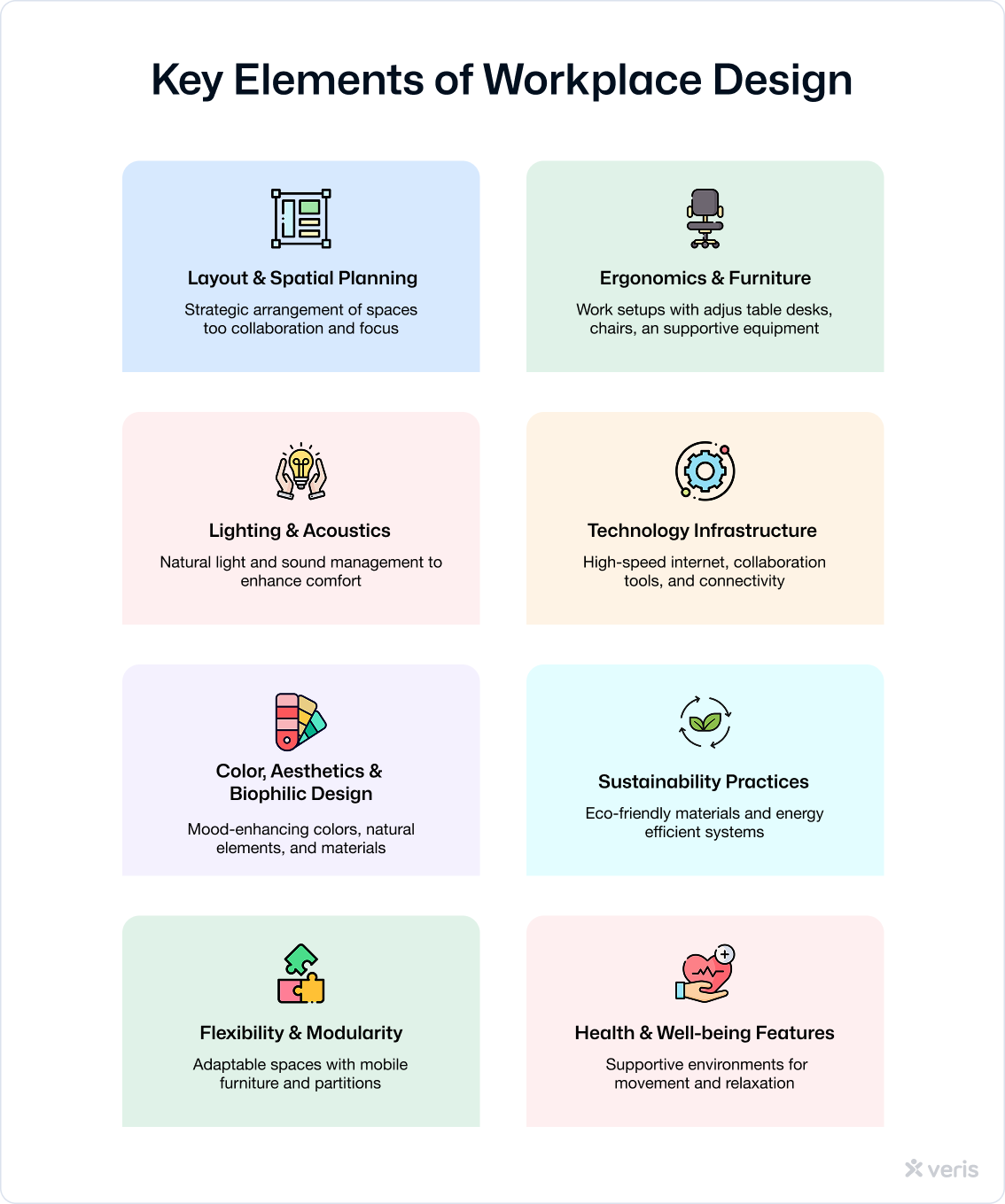
- Layout & spatial planning: The way a workplace is laid out shapes how people engage with their surroundings, and with each other. A well-planned layout considers traffic flow, natural light direction, noise levels, and task types. It blends open collaboration zones with focused quiet areas, ensuring movement is fluid without disrupting productivity. The best layouts are intuitive, inclusive, and easily adaptable to different work modes or team sizes.
- Ergonomics & furniture: Workplace comfort starts with how the body interacts with its environment. Ergonomic design reduces strain, prevents injuries, and promotes better posture throughout the day. Adjustable desks, task chairs with lumbar support, footrests, and even standing desk options help tailor each workspace to the individual. Good furniture design is not just about comfort, t is a statement of care for employee health, performance, and long-term engagement.
- Lighting & acoustics: Lighting directly impacts mood, energy, and focus. Exposure to natural light improves circadian rhythm, alertness, and even morale. Where natural light is limited, layered artificial lighting (ambient, task, accent) creates balance. Acoustics, meanwhile, manage distractions. Soft furnishings, acoustic panels, ceiling baffles, and smart spatial zoning absorb sound and reduce echo, making the workspace calmer and more cognitively supportive.
- Technology infrastructure: A modern workspace needs digital muscle. High-speed internet, cloud-based collaboration platforms, wireless charging stations, and video conferencing tech are non-negotiables. Thoughtful integration of tools like meeting room booking systems, occupancy sensors, and unified communication platforms empowers hybrid teams and streamlines operations. The right tech foundation ensures that the workspace keeps up with the pace of work.
- Color, aesthetics, and biophilic design: Design speaks a silent language. Color schemes influence emotional states—blues for calm, greens for creativity, yellows for energy. Biophilic design brings natural materials, indoor plants, water features, and organic textures into the office, helping to reduce stress, improve air quality, and support cognitive function. Aesthetics are not decorative extras—they are functional tools to elevate daily experience and reflect brand personality.
- Sustainability practices: Sustainable design aligns business goals with environmental stewardship. From selecting low-VOC paint and recycled flooring to using LED lighting and energy-efficient HVAC systems, every choice counts. Green certifications like LEED or WELL guide holistic decisions. Indoor plants not only beautify spaces but also purify the air. A sustainable workplace is healthier for the planet—and for the people inside it.
- Flexibility and modularity: Work is not static, and neither should a workspace be. Modular systems—such as movable partitions, mobile furniture, and plug-and-play tech—allow companies to reconfigure spaces as teams grow or project needs shift. Flexibility supports agile work models, hot-desking, and quick collaboration. It saves costs over time and ensures longevity by future-proofing the environment.
- Health and well-being features: Wellness is now a central pillar of workplace design. Thoughtful environments support mental clarity and physical vitality. Features include wellness rooms, quiet pods, nap spaces, filtered air systems, healthy snack stations, access to sunlight, and pathways that encourage walking. These elements not only reduce burnout and stress but also build a culture of care, trust, and holistic performance.
Why is workplace design so important?
Workplace design is not just about aesthetics or floor plans, it is a catalyst for performance, culture, and long-term resilience. Here is why investing in thoughtful design pays off in powerful ways:
- Productivity enhancement: A well-designed workspace reduces friction. It minimizes physical discomfort, eliminates workflow bottlenecks, and supports deep focus. With the right balance of quiet zones, collaborative areas, and ergonomic setups, employees spend less energy adapting to their environment and more energy achieving their goals.
- Boosting collaboration and creativity: Design directly influences how and where people interact. Open zones for brainstorming, casual breakout spaces, writable walls, and tech-enabled meeting rooms encourage spontaneous exchanges and creative flow. When people have space to connect, ideas multiply.
- Employee retention and satisfaction: People stay where they feel valued. Comfortable furniture, natural light, biophilic elements, wellness rooms, and even a well-placed coffee corner contribute to a workplace that supports physical and emotional well-being. A good design shows that the company cares—boosting morale, engagement, and loyalty.
- Embodying brand values and company culture: A workspace is a living expression of a company’s identity. Bold design choices can communicate innovation, openness, sustainability, or precision. From color schemes to spatial arrangements, every element reinforces the brand's ethos, making a strong impression on both employees and visitors.
- Preparing for change: Hybrid, scale, and restructuring: In a world where flexibility is non-negotiable, workplace design becomes a strategic advantage. Modular layouts, adaptable furniture, and scalable tech infrastructure allow businesses to pivot quickly—whether expanding teams, supporting hybrid schedules, or undergoing organizational shifts.
Top workplace design trends to watch in 2025
The modern workplace is evolving fast, shaped by new expectations, technologies, and values. These are the top design trends transforming office spaces into adaptive, inspiring ecosystems:
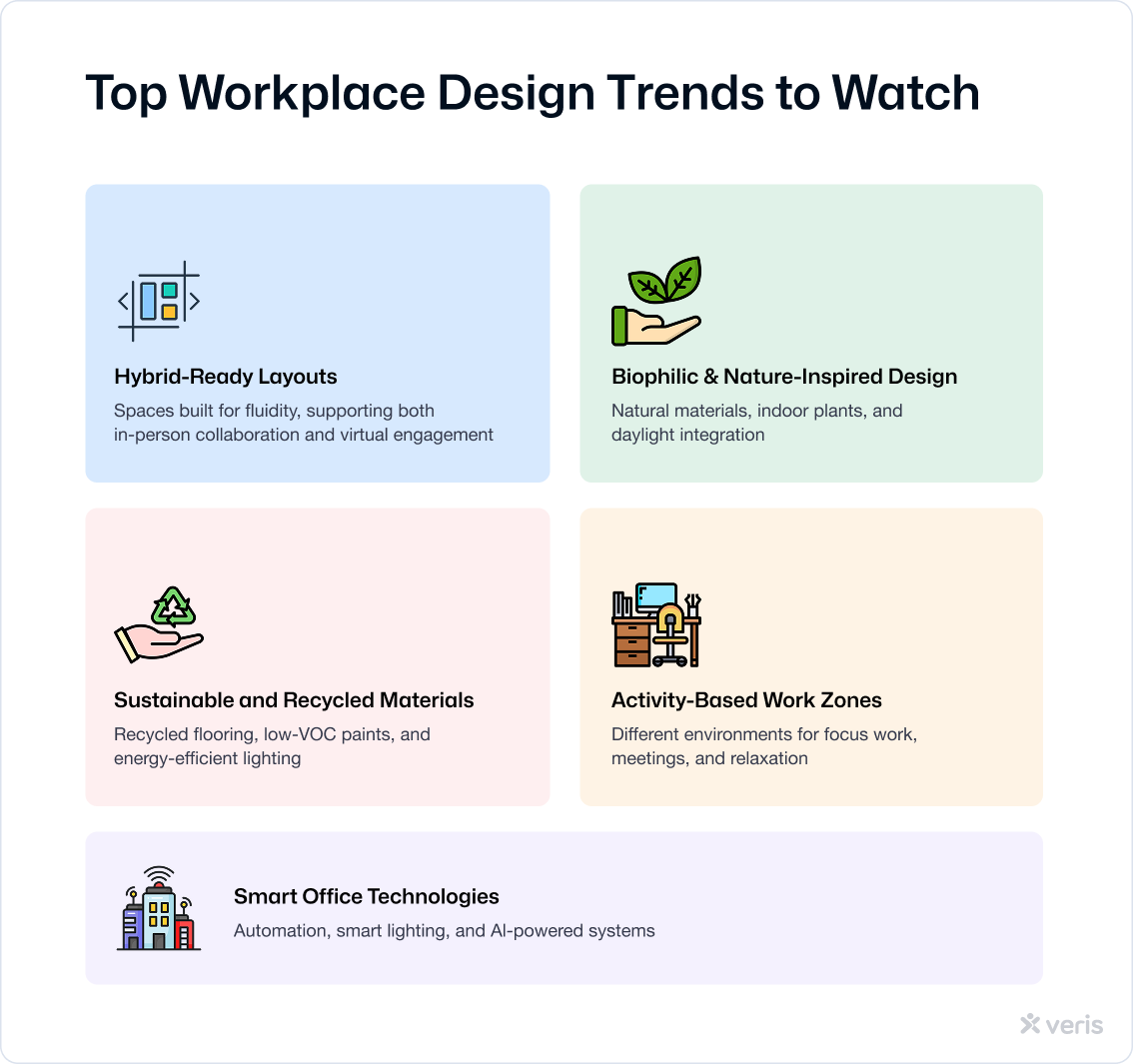
- Hybrid-ready layouts: Spaces are now built for fluidity. Hybrid work calls for flexible areas that support both in-person collaboration and virtual engagement. Think touchdown desks, quiet pods for video calls, and tech-enabled meeting zones that work across time zones and devices.
- Biophilic and nature-inspired design: Natural materials, indoor plants, organic textures, and daylight integration are no longer add-ons—they are essentials. Biophilic design reduces stress, boosts mental clarity, and helps people feel more grounded in fast-paced work environments.
- Sustainable and recycled materials: Environmental responsibility is built into the blueprint. Recycled flooring, low-VOC paints, energy-efficient lighting, and circular design thinking are becoming standard. Offices are embracing green certifications, not just for optics, but for impact.
- Activity-based work zones: Different tasks demand different environments. From deep-focus pods to lounge-style brainstorm corners, zoning allows employees to choose where and how they work best. This user-centric design supports productivity, autonomy, and energy management.
- Smart office technologies: Automation is reshaping how we interact with our spaces. Smart lighting, occupancy sensors, climate control, booking systems, and AI assistants enhance convenience, reduce waste, and help offices operate more intelligently and sustainably.
The Role of smart tools in workplace design
In today’s hybrid and dynamic work environments, smart tools have become a core layer of workplace design enabling spaces to function more intuitively and efficiently. Solutions like visitor management systems ensure secure, seamless entry experiences that reflect a company’s professionalism while minimizing bottlenecks at reception. Meeting room booking, allows employees to reserve spaces on the go, reducing conflicts and enhancing planning. Hot-desking empowers flexible seating without confusion, making it easier for distributed teams to find and use workstations. These tools do more than automate—they shape how people experience and move through a workspace, blending operational efficiency with human-centric design.
Equally important are tools that offer real-time occupancy analytics, helping organizations monitor space usage and make informed decisions on layout, scaling, or reconfiguration. For instance, if certain zones are consistently underutilized, they can be adapted into quiet rooms or collaborative hubs. When integrated thoughtfully into the design process, these systems help offices become more responsive—adjusting lighting, temperature, or cleaning schedules based on actual footfall. In essence, smart workplace tools transform spaces from static environments into intelligent ecosystems that evolve with the needs of the business and its people. This synergy between design and technology is what defines the next generation of truly modern workplaces.
Frequently asked questions (FAQs)
Conclusion: Design your workplace, design your future
Workplace design is not just a backdrop—it is an active force that shapes how people think, feel, and perform every day. From boosting productivity and collaboration to supporting wellness and expressing brand identity, thoughtful design aligns the physical environment with the goals and values of the organization.
In a world where agility, well-being, and culture are top priorities, the spaces we create must evolve to meet those demands. A well-designed workplace is no longer optional—it is foundational.
Now is the time to take a closer look at your workspace.
What energizes your team? What slows them down? What spaces foster connection—and which ones feel forgotten?
Start with simple questions. Be honest. And remember: designing a better workplace is not just about furniture or floor plans—it is about designing a better future for the people within it.
Transform how your workplace works.
Speak with a workplace expert or schedule a personalized walkthrough.











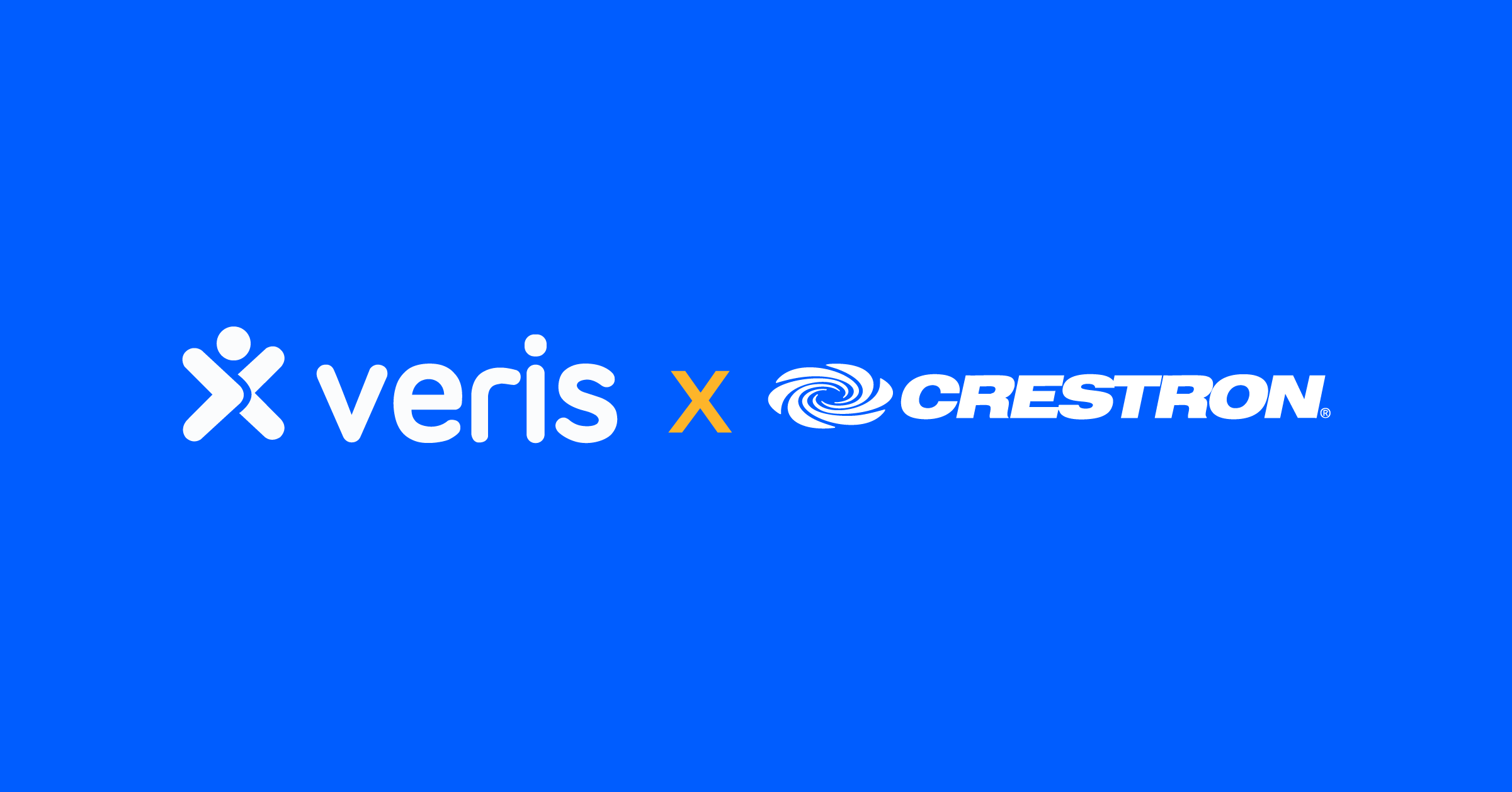


















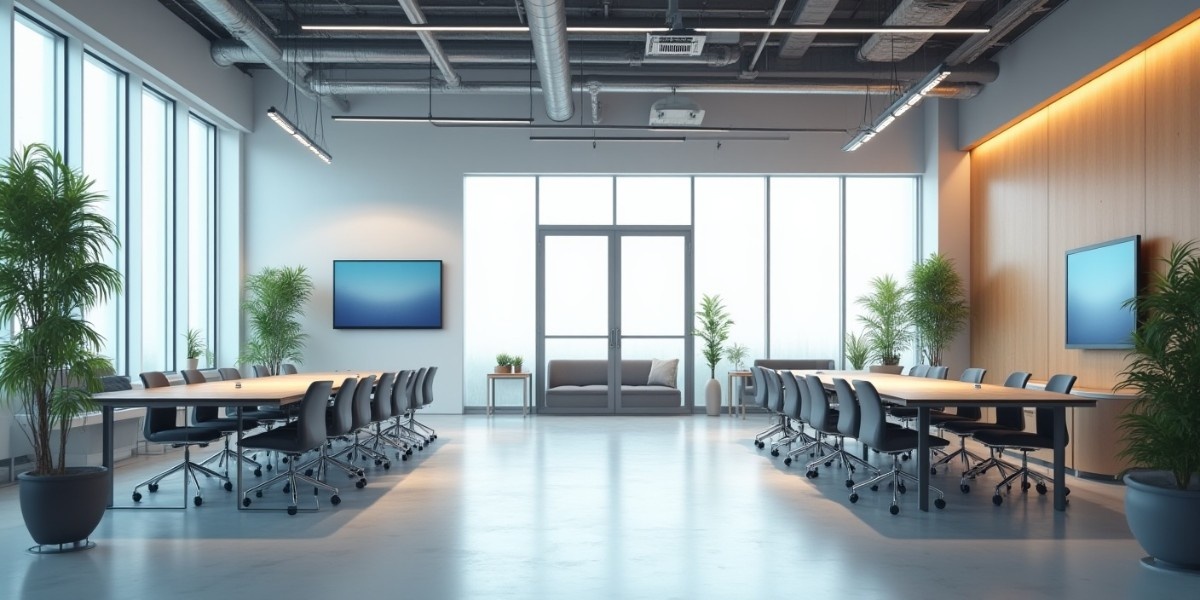

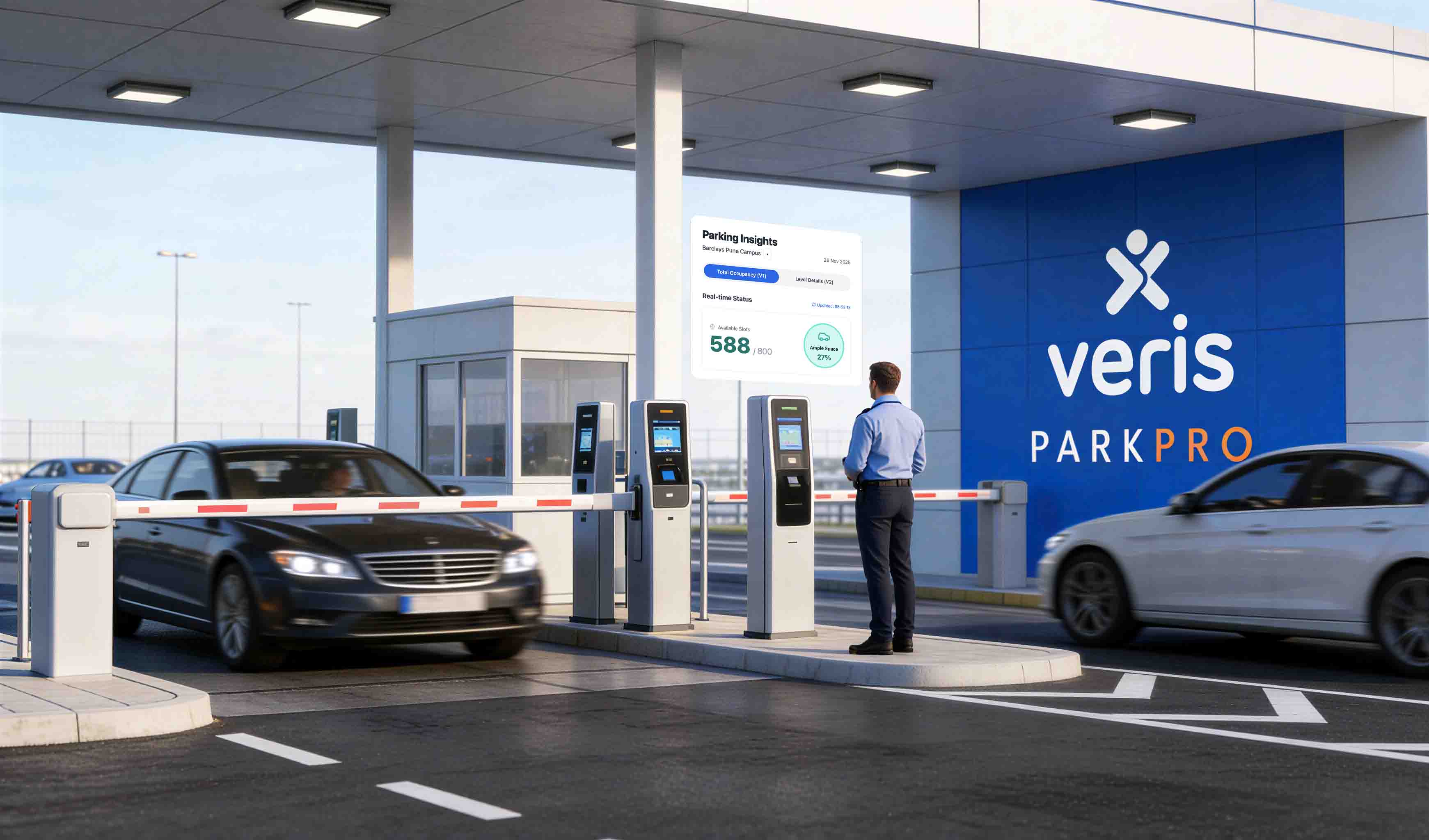

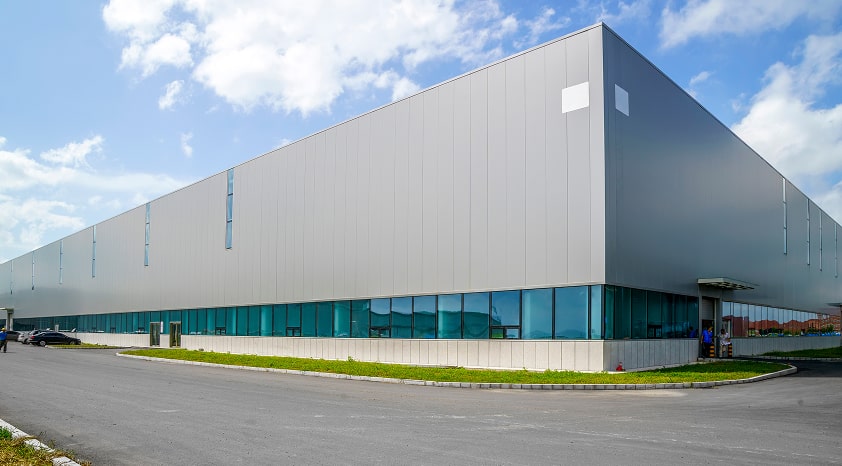


.avif)
.avif)





